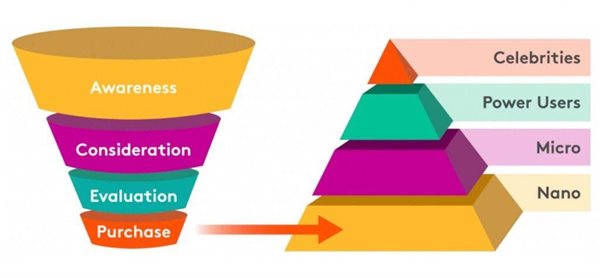Whether it was Michael Jordan, Paris Hilton or the fictional James Bond, in former years the influencer marketing arena was limited to celebrities and a few public figures, but the democratisation of content and growth of social media has facilitated the amplification and diversification of these tactics.
An issue of trust
Brands are constantly searching for new ways to cut through the clutter and shed the cynicism associated with advertising. In fact, the 2019 Edelman Trust Barometer Special Report on brands indicated that 63% of consumers trust what influencers say about a brand more than what the brand says about themselves. More so, consumers are more likely to trust recommendations from peers or public figures because they believe the opinions of those they respect and admire to be unbiased. To support this, 44% of Gen Z indicate that they have made a purchase decision based on a recommendation by a social influencer.
Good influence or bad?
Increasing functionality of mobile devices enables consumers to shop, chat, watch TV and create content in one place. Mechanisms like discount codes and Instagram’s Shoppable Posts have further bridged the gap between brands and consumers, often with influencers acting as intermediaries. However, the social media and influencer industries are still constantly evolving.
Regulation has increased, consumers demand more transparency and the proliferation of #sponsored content has, in some cases, created influencer fatigue. The relatability of macro-influencers (defined by Scrunch Influencer Marketing as someone who has an audience within the follower range of 50,000 to 300,000) and the possible negative impact of social media on a user’s mental health have started an important conversation around the inherent value and sustainability of our online habits, prompting platforms like Instagram to trial the removal of the ‘like’ option from posts. These factors have made authentic, transparent and relatable content more vital than ever.
The Covid-19 pandemic has thrown in an additional curveball, with influencers and celebrities having to carefully navigate how they communicate and engage with their audiences. This crisis has further brought influencers’ relevancy and relatability into question, with consumers searching for online content and opinions from more credible thought leaders and authority figures. This leads us to question whether there is space for influencers during a pandemic and, if so, what that space will look like a few months from now.
Influence versus engagement
Research demonstrates that as an influencer’s following increases, the level of engagement with their posts decreases.
A recent trend is the shifting away from exclusive celebrity-focused endorsement and one-time traffic boosts to nurturing long-term relationships instead, which provide engagement and conversion rather than just reach and awareness. Brands are realising that micro- or nano-influencers (someone who has an audience within the follower range of 2,000 to 50,000) can create more relatable and authentic content, making them worthwhile marketing capital.
Clothing retailer Zara demonstrated the strategic use of micro-influencers when its #DearSouthAfrica campaign trended at number one on Twitter and saw close to eight million consumers engaging with Zara and #DearSouthAfrica on social media. This proved that brands could cost-effectively increase visibility and provide more relatable, engaging campaigns without using macro-influencers or celebrities.
As our understanding of the influencer landscape evolves, it’s clear there is no one-size-fits-all strategy that works for every brand. From a media perspective, it’s necessary to align the role an influencer could play with the campaign objectives and KPIs. In addition, there should be a clear distinction between the roles macro- and micro-influencers play based on those objectives. For example, macro-influencers may be better suited to reach or awareness campaigns, whereas micro-influencers may have less reach but higher engagement. The charts below illustrate which influencer is suited to which type of campaign:

By employing sophisticated pre-campaign measurement and social-listening tools, marketers can evaluate influencer value based on their reach and engagement capabilities, the demographics and psychographics of their followers, as well as the content they share. This specialised selection process, ultimately, enables better delivery against the objectives. Additionally, influencer marketing mechanisms, such as discount codes, link social and digital platforms, and not only offer consumers utility, but allow for measurability from both a media and a business perspective.
Make influence count
As connectivity continues to advance, and social media takes on more functional uses beyond communication, the role of the influencer is expected to grow. With the convergence of e-commerce and social media, these social-relationship assets remain vital in connecting brands and consumers. Our better understanding of the influencer landscape and the roles they play, coupled with access to sophisticated evaluation tools and measurement capabilities, ultimately leads to the ability to optimise influencer strategies and deliver ROI.

































